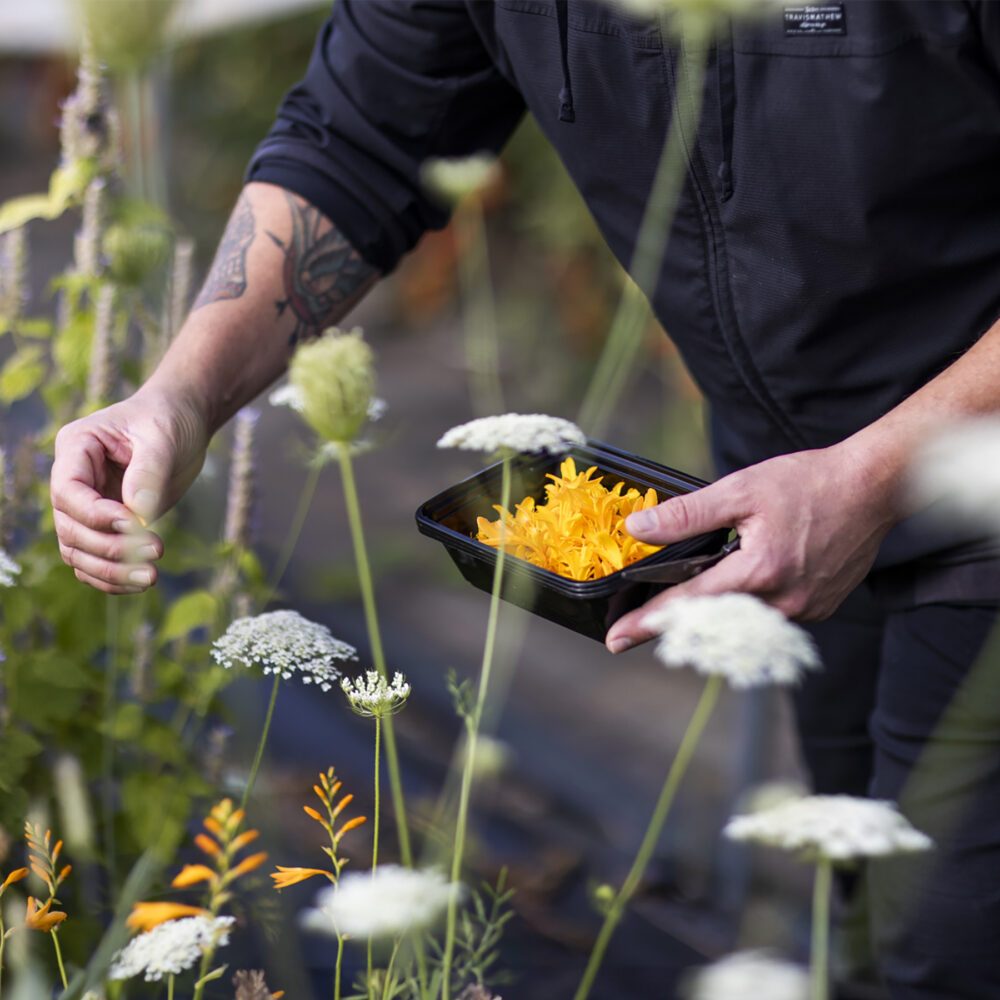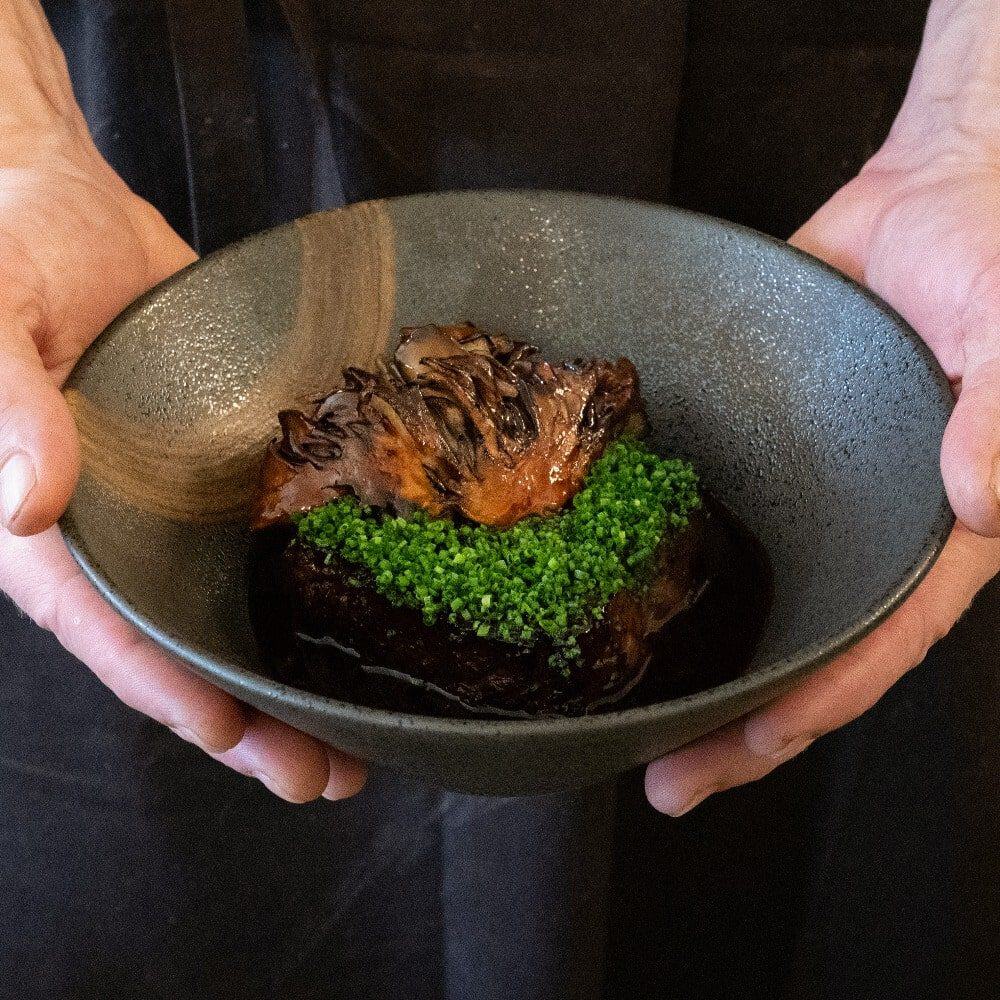Food & Drink
Ten Restaurants We’d Love to See More of in 2024
Changing the meaning of eating local
By Tiffany Ran December 29, 2023
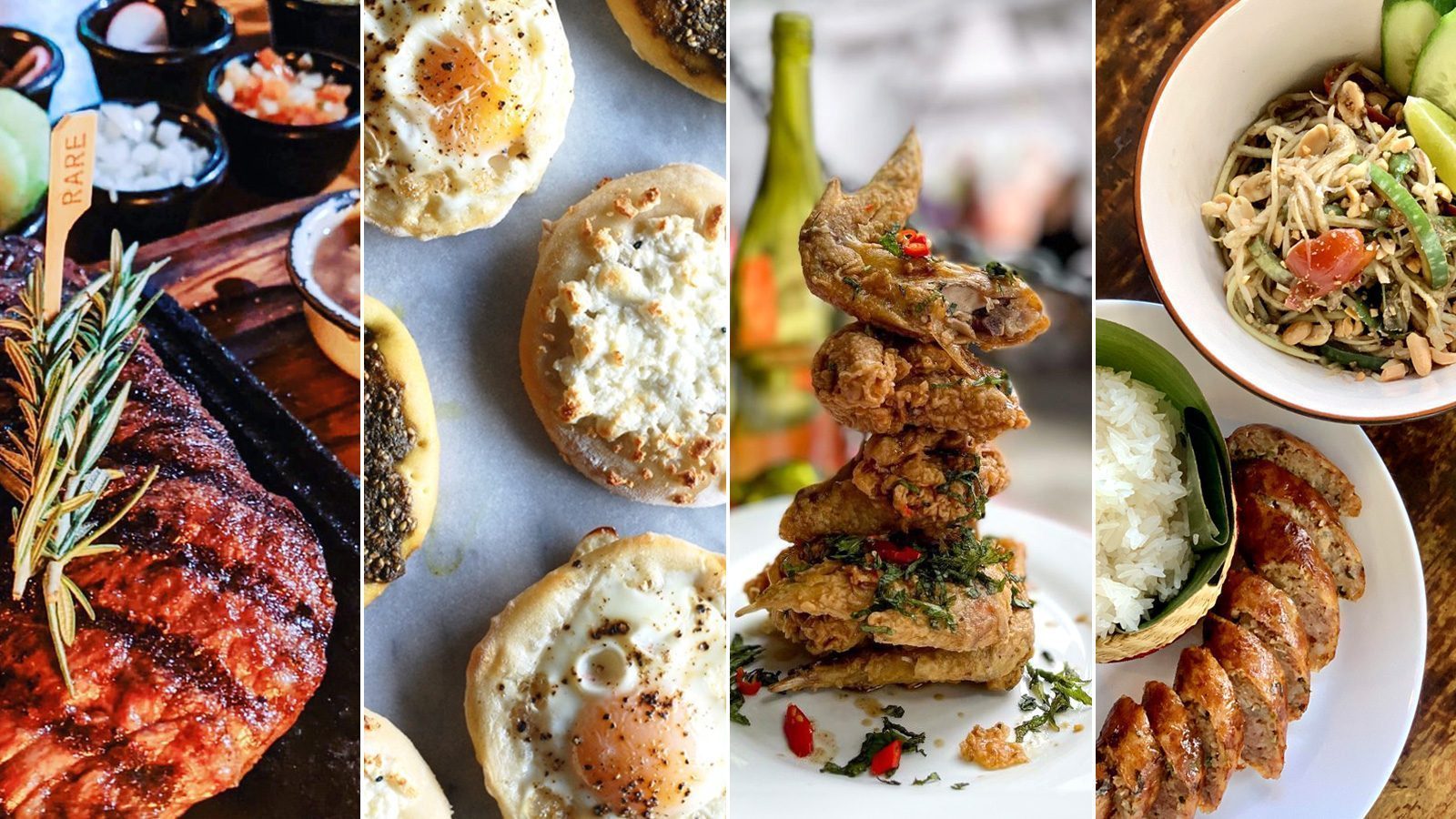
This article originally appeared in the March/April 2024 issue of Seattle magazine.
The time when I first started writing about food was when most Chinese restaurants in this city still had separate Chinese and English menus — Chinese, with dishes the chefs want to make for those in the know, and English, a catch-all menu of the approachable, recognizable kung pao chicken or moo shu pork. Today, our restaurant scene has compelling menus that stand to expand our waistlines and our perspective. It’s common this time of year for year-end roundups touting the newest, “best, most exciting” restaurants, but looking ahead to 2024, I want to hone in on a different set of restaurants redefining what it means to eat local in Seattle.
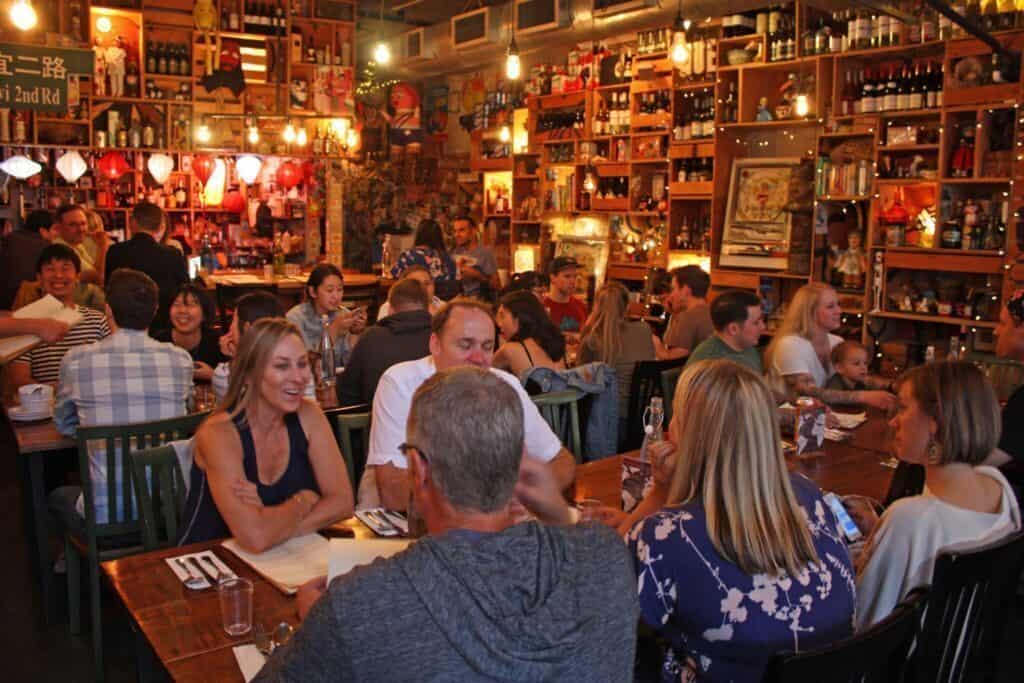
The atmosphere at Nue in Capitol Hill is inviting and cozy.
Photo courtesy of Nue
I had some doubts about Nue when it first opened on Capitol Hill. What kind of restaurant is this, one that serves dishes from any and every region in the world? Does a menu with both Vietnamese water beetles and South African bunny chow make sense? But in its almost 10 years of business, Nue remains one of the only places in Seattle that offers these dishes. No one can deny the tiresome efforts that owner Chris Cvetkovich went through to source those winged water beetles or the extensive research required in recreating almost a decade’s worth of obscure dishes from different countries. Each menu item at Nue is fun and playful while being subtly revelatory and new.
Chef David Orozco opened and eventually expanded Asadero to two Mexican steakhouses (Kent and Ballard). There, he could’ve gone with standard cuts of flank for run-of-the-mill fajitas. Instead, Asadero’s wagyu tacos come fresh off the mesquite fire grill with charred peppers and scallions, served with a range of salsas and sauces varying in spice and smokiness. Despite the size of the restaurants, Asadero is still a family-owned and operated business, with Orozco’s father managing the Kent location and his mother making salsa the old-fashioned way with a molcajete, the Mexican version of a mortar and pestle.
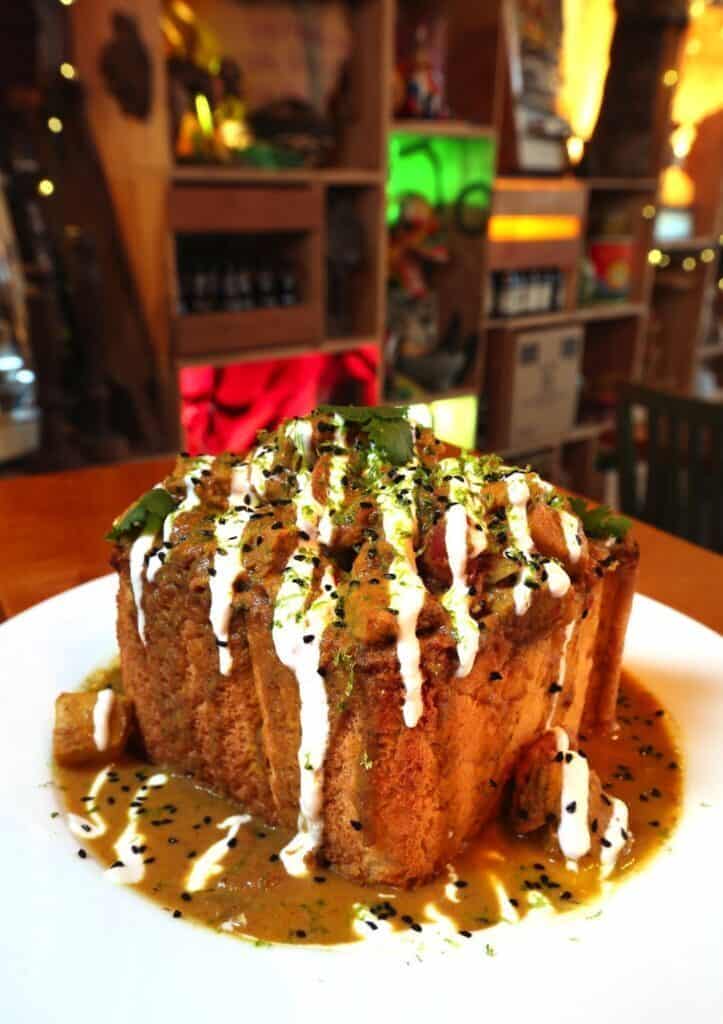
An order of bunny chow at Nue.
Photo courtesy of Nue
We don’t give enough credit to the bravery involved in opening such restaurants where the cuisine and dishes are unfamiliar, ones that show us a new region with different ingredients and challenging flavors. Aside from the standard work and capital involved in getting a restaurant off the ground, these newer concepts require much more marketing and education, genuine hospitality to ease people into new experiences, and extensive efforts for sourcing obscure ingredients.
When Chef Tina Fahnbulleh moved to Seattle and could not find the same West African spices and foods that she had enjoyed from home and other parts of the U.S., she made it her mission to share her cuisine with friends, family, and soon, most of the city through pop-ups. To recreate her Liberian and Ghanaian recipes in Seattle, Fahnbulleh — of Gold Coast Ghal Kitchen — works with relatives in Ghana and Roba’s African Store in White Center to source ingredients that aren’t often locally available. The fully loaded waakyé (pronounced “wah-chéé”) is a hearty beef stew on spaghetti with rice and black-eyed peas, a shrimp pepper sauce, fried plantains, gari, cabbage, and a soft-boiled egg. Though that alone already sounds like a lot, opting for the fried fish on top is a solid decision.
Seeing regional dishes and experiences take root in Seattle shows how we’re beginning to scratch beneath the surface of the cuisines we already represent and in turn, pay a greater respect to that cuisine as a whole. We’ll not only have general Thai food, but may distinguish between Isaan (northeastern) or southern. We can begin to move away from the long-trending Szechuan restaurants that so dominate the majority impressions of Chinese cuisine to explore other provinces.
Dong Ting Chun, which opened its first location in Southern California in 2006 and now has two locations in Washington, has been quietly touting the warm, fiery dishes from Hunan province. Its mashed eggplant with green peppers and century egg features the feared century egg in a new, different way. Its still underrated lamb dishes are the best-kept secrets. The bubbling red, chili-laden Liu Yang lamb rib stew uses intense heat, smashed ginger and leeks to bring out the robust aroma of lamb. A milder sliced lamb in golden soup has thin sliced fatty lamb in a rich sun-hued broth that is perfect for our cold winters. Its range of sweet treats like fried pumpkin cakes or refreshing ice jellies offers great ways to put out the fire.
Xi’an cuisine is slowly rising in popularity in other metropolitan cities. The most popular noodle in China’s Shaanxi province is now widely known and accepted in Seattle due to the efforts of Lily Wu. After two years of learning to make biang biang noodles, Wu moved to Seattle to open Xi’an Noodles. Noodles aside, Xi’an Noodles also brought to Seattle Xi’an’s ruojiamo, a wheat flour bun that sandwiches braised proteins like lamb, beef, or pork. Its lamb dishes rich in garlic, cumin, and peppers bear flavors unique to this restaurant and this province and thankfully, we now have three local Xi’an Noodle locations, University District, downtown Seattle, and Bellevue.
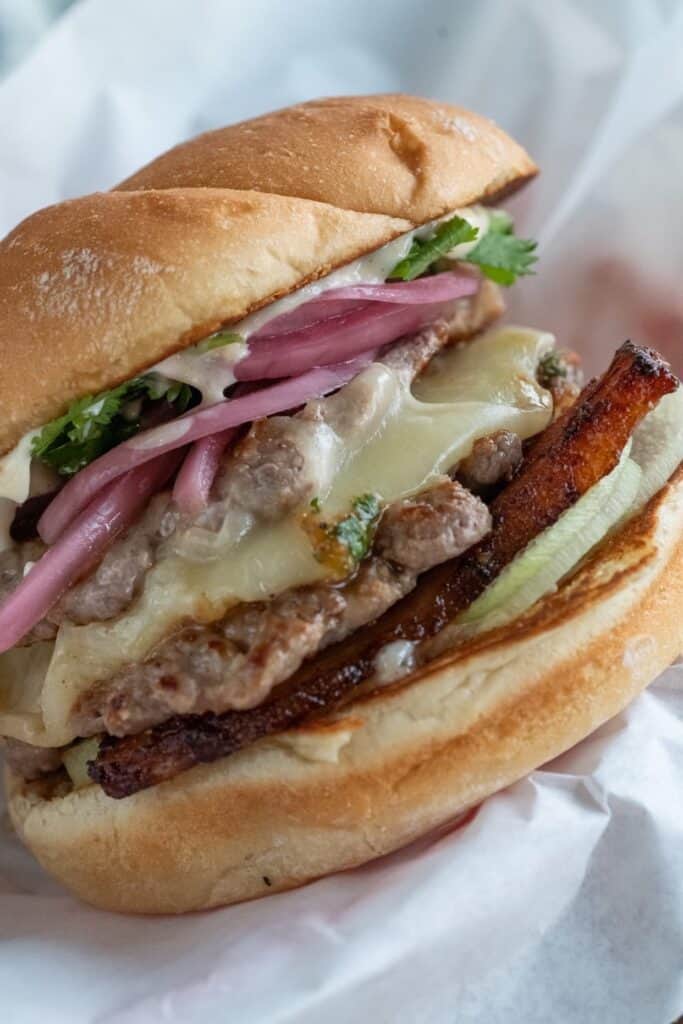
The Lao burger at Taurus Ox has been named among the best burgers in Seattle.
Photo by Janessa Sneva
For most of our city’s culinary history, immigrants make up the backbone of the industry, and it’s great to see restaurant menus reflecting their stories. After working together at Melrose Market restaurants like Bar Ferdinand and Sitka and Spruce, Chef Ahmen Suliman and Marc Papineau returned to the Melrose stall where Bar Ferdinand first started to open Cafe Suliman. Suliman based the menu off his mother’s recipes with homey dishes that reflect a wide range of Middle Eastern flavors.
With many popups under her belt, Chef Janet Bacerra secured a six-month chef residency at Pair and grew the opportunity to a full-fledged restaurant, Pancita at Pair. Bacerra has spent years in the industry in largely Western kitchens that omitted the Mexican dishes and flavors she grew up enjoying. She sought through her popups to make food that was meaningful and true to her upbringing. Her menu showcases the bright, tart, crunchy, fresh flavors in Mexican cuisine like a seasonal scallop aguachile with sorrel, apple, watermelon radish, serrano, lime, and cucumber. Bacerra and her team nixtamilzes corn and makes masa for their tortillas. Her chaco flan takes the cake as the most coveted flan in town.
At Taurus Ox, chefs Khampaeng Panyathong and Janessa Sneva craft a menu based off Panyathong’s family dishes where the Lao sausage and the Nam Khao crispy rice salad introduce locals to pungent, spicy, herbaceous Laotian flavors that are initially surprising and deeply satisfying. Taurus Ox’s Lao burger, full of those same dynamic flavors, has been named among the best burgers in Seattle. Panyathong is also adding pizza to that mix with his new First Hill spot Ananas, and thanks to Panyathong’s entrepreneurial zeal and spirit of invention, we’ll likely be the first city in the nation to have a Laotian pizza joint.
Seattle’s food scene, much like a kitchen in a home, welcomes visitors, nourishes the ones who stay, and fuels us in our efforts to lay down roots, to celebrate and live. Such restaurants don’t just alleviates the dearth of such cuisines listed on Yelp or add to a slew of accolades, these restaurants become neighborhood spaces where history and tradition can reside firmly in the present, maybe in the form of a pineapple Semita Pacha from Salvadorean Bakery, or that weekly shopping trip and a bite of Man’ousheh at Goodies Mediterranean Market.
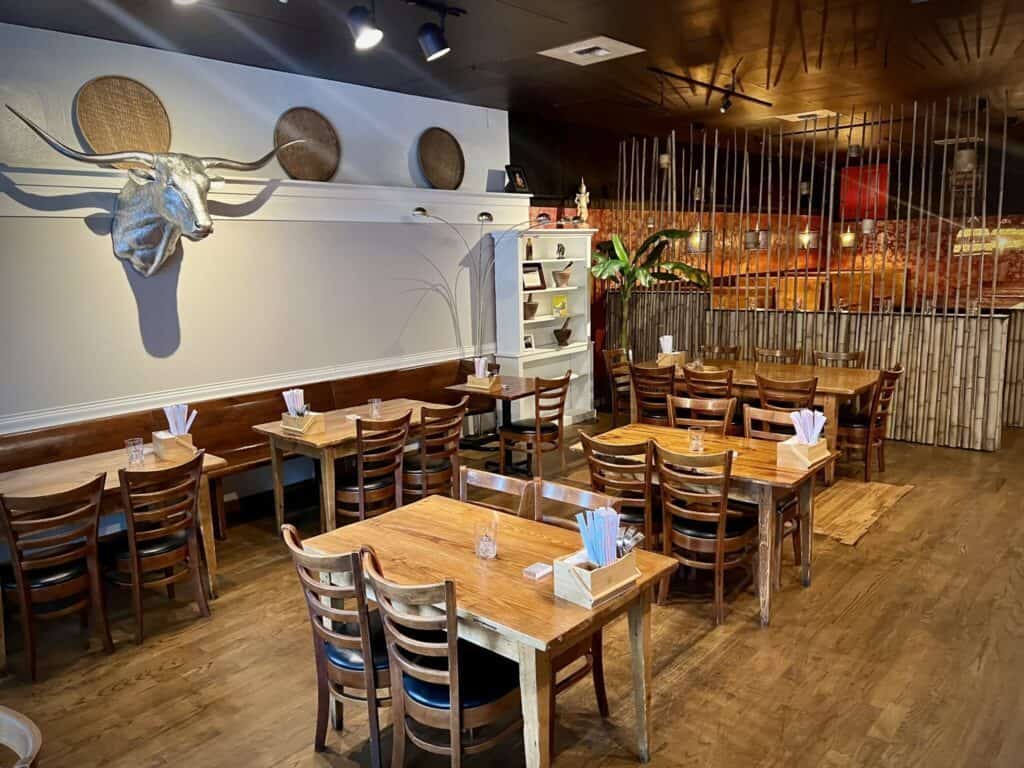
Taurus Ox in Capitol Hill celebrates the bold flavors of Laos with a casual dining experience.
Photo by Janessa Sneva
If 2024 continues to promise more of these restaurants, we can look ahead to a food scene full of warmth, excitement, and adventure where nourishment is more an exchange than a transaction.

